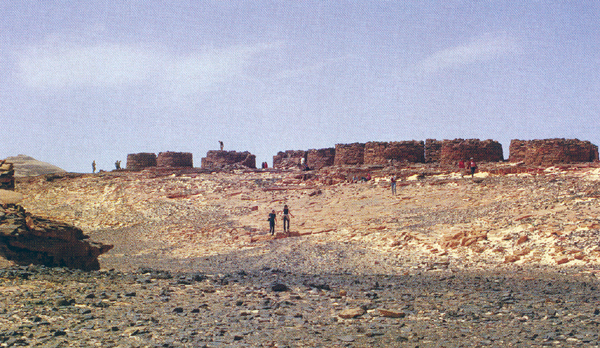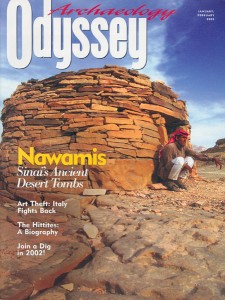Nawamis of Sinai
Exploring 5,000-year-old desert tombs

They look like flattened igloos—mysterious ancient round burial tombs, called nawamis, in southern Sinai. To Canadian archaeologist Charles Currelly, who studied them in 1904 as part of British archaeologist Flinders Petrie’s expedition to Sinai, these 6-foot-high sandstone structures resembled beehives scattered across the desert floor.

Their name, nawamis, means mosquito. According to Bedouin legend, the nawamis were built as protection against mosquitoes by the Israelites of the Exodus during their wanderings in Sinai. The Bedouin also give the more likely explanation that the term namusiyeh (plural, nawamis) refers to any separate or freestanding structure. We shall simply use nawamis to refer to one or many of these unusual structures.
From the burial goods and human remains found in the nawamis, we know that they were built around 5,000 years ago as tombs by nomadic herders. These remarkably preserved stone buildings are thus the world’s oldest remains of a pastoral nomadic society.
Already a library member? Log in here.
Institution user? Log in with your IP address.

